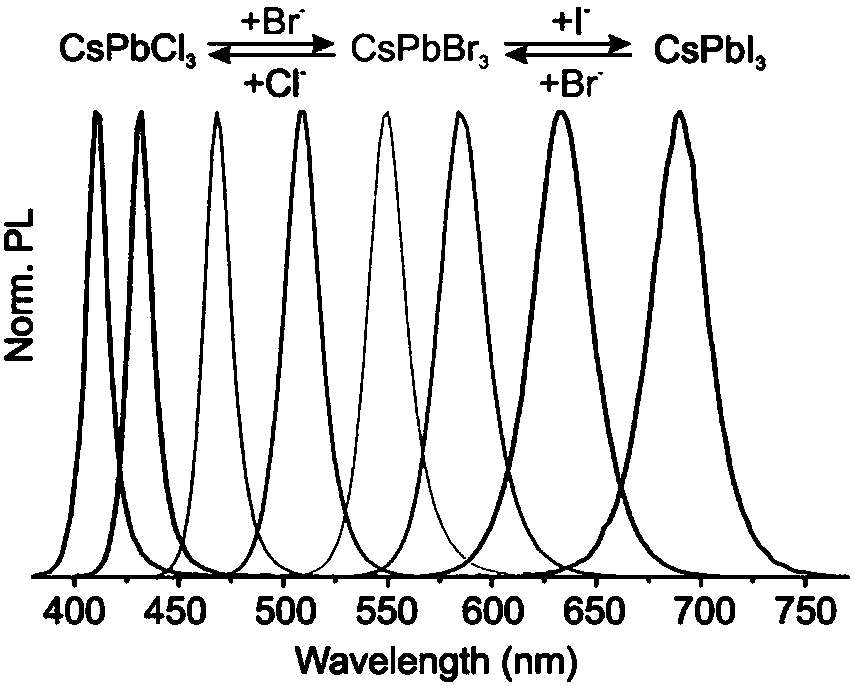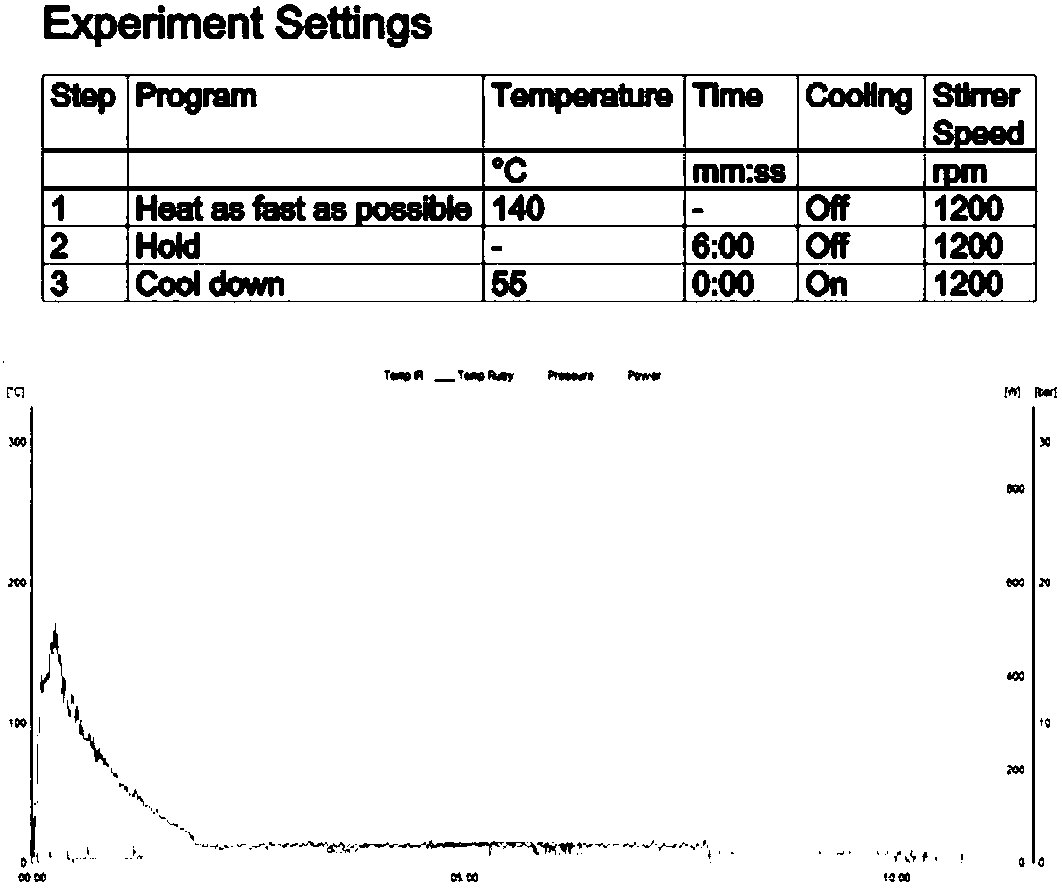Silicon dioxide coated caesium-lead-bromine-perovskite nanocrystal compound and microwave assisted heating synthesis method thereof
A microwave-assisted, synthetic method technology, applied in chemical instruments and methods, nanotechnology, nano-optics, etc., can solve the problems of poor fluorescence performance, poor reproducibility, time-consuming, etc., and achieve fast heating efficiency and high thermal energy utilization rate. Effect
- Summary
- Abstract
- Description
- Claims
- Application Information
AI Technical Summary
Problems solved by technology
Method used
Image
Examples
Embodiment 1
[0035] Discussion on Optimum Synthesis Temperature and Time
[0036] Add 16.3mg Cs to the reaction tube sequentially 2 CO 3 , 38.7mg of lead stearate, 71.6mg of TBB, 5mL of ODE and 0.28ml of APTES, then add a small stirring bar and cover with a PEEK card cover, and finally put it into the reaction chamber of the microwave synthesizer. Discuss the reaction conditions at different temperatures of 80, 100, 120, 140, and 160°C (reaction time is 6 minutes, and the rotation speed is 1200 rpm); at the above optimal temperature, discuss the reaction conditions of different reaction times of 3 minutes, 6 minutes, 9 minutes, and 12 minutes .
[0037] Since CsPbBr 3 The formation energy is very low, so rapid temperature rise is conducive to faster nucleation and growth, thereby obtaining better optical properties. During the experiment, it was found that when the temperature was lower than 140°C, the precursor did not react completely, and when the temperature reached 140°C, a bright...
Embodiment 2
[0039] Discussion on Precursor Ratio
[0040] First add 5 mL of octadecene solution to the reaction tube, and then accurately add different amounts of Cs 2 CO 3 , lead stearate, TBB and APTE in the reaction tube, so that the molar ratio Cs 2 CO 3 : lead stearate: TBB: APTE=1:1:3:1, other ratios such as 2:1:3:1, in the optimal reaction temperature and the time that embodiment 1 determines, explore different precursor ratios to impact on product performance.
[0041] By optimizing the ratio of different precursors, it was found that when Cs 2 CO 3 CsPbBr synthesized at 32.4mg, 38.7mg of lead stearate, 71.6mg of TBB and 280uL of APTES 3 @SiO 2 The effect is the best, and its dispersion and fluorescence properties are obviously better than other ratios. Such as Figure 4 As shown, when APTES is 280uL, CsPbBr 3 @SiO 2 There is no obvious precipitation, indicating that the particles are relatively small and uniform. In addition, the fluorescence performance under the ultr...
Embodiment 3
[0043] CbBr 3 @SiO 2 Microwave-assisted heating synthesis method of perovskite nanocrystalline composite:
[0044] Add 32.4mg Cs to the reaction tube sequentially 2 CO 3 , 38.7mg lead stearate, 71.6mg TBB, 5mL octadecene and 280uL APTES, then add a magnetic stirrer, and finally place the reaction tube in the reaction chamber of a microwave synthesizer, and react at 140°C for 6min to obtain CsPbBr 3 @SiO 2 Perovskite nanocrystalline composites;
[0045] CbBr 3 @SiO 2 The structural properties and their fluorescence properties are characterized as Figure 6 As shown, among them, Figure 6 (a) is CsPbBr 3 @SiO 2 XRD spectrum; Figure 6 (b) is CsPbBr 3 @SiO 2 Fluorescence spectrum (gained product CsPbBr 3 @SiO 2 Fluorescent picture under UV-365nm ultraviolet lamp irradiation); Figure 7 (a, b) is CsPbBr 3 @SiO 2 TEM and its HRTEM map; Figure 8 CsPbBr 3 @SiO 2 EDS diagram.
[0046] From Figure 6 (a) The XRD spectrum shows that 15°, 21°, 31°, 33°, 37° and 43...
PUM
 Login to View More
Login to View More Abstract
Description
Claims
Application Information
 Login to View More
Login to View More - R&D
- Intellectual Property
- Life Sciences
- Materials
- Tech Scout
- Unparalleled Data Quality
- Higher Quality Content
- 60% Fewer Hallucinations
Browse by: Latest US Patents, China's latest patents, Technical Efficacy Thesaurus, Application Domain, Technology Topic, Popular Technical Reports.
© 2025 PatSnap. All rights reserved.Legal|Privacy policy|Modern Slavery Act Transparency Statement|Sitemap|About US| Contact US: help@patsnap.com



